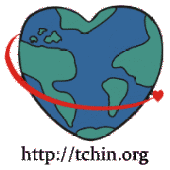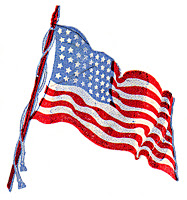
The Congenital Heart Information Network is a national organization that provides reliable information, support services, financial assistance and resources to families of children with congenital heart defects and acquired heart disease, adults with congenital heart defects, and the professionals who work with them.
Kenneth
The joy and anticipation of learning that we had a third child on the way quickly turned to anxiety, fear of the unknown, and disbelief, when at 19-weeks we found out about Kenneth’s heart defect. Initially we were overwhelmed with one thought, why, which slowly faded somewhat into, okay, lets find a way to beat this. In the pursuit of information I felt like an outsider. I only seemed to get bits and pieces of information along the way and found it very frustrating. I wanted to understand what was going on and I wanted to find a way to help.
The diagnosis:
Kenneth was diagnosed with Pulmonary Atresia. Pulmonary Atresia is a Congenital Heart Condition. As the heart forms the Pulmonary Valve, at the base of the lung artery (Pulmonary Artery) does not develop and the Right Ventricle does not develop normally and is often small (Hypoplastic).
 These defects mean that little or no blue (deoxygenated) blood passes through the lung artery to the lungs. If blood is unable to pass to the lungs through the right side of the heart it will pass through a hole (Atrial Septal Defect) between the right and left collecting chambers (Atria) into the left side of the heart where it mixes with red (oxygenated) blood and passes into the body artery (Aorta). Some blood will then flow to the body and some will pass to the lungs via the connection (Patent Ductus Arteriosus) between the body artery and the lung artery.
These defects mean that little or no blue (deoxygenated) blood passes through the lung artery to the lungs. If blood is unable to pass to the lungs through the right side of the heart it will pass through a hole (Atrial Septal Defect) between the right and left collecting chambers (Atria) into the left side of the heart where it mixes with red (oxygenated) blood and passes into the body artery (Aorta). Some blood will then flow to the body and some will pass to the lungs via the connection (Patent Ductus Arteriosus) between the body artery and the lung artery.
The plan:
During gestation, Kenneth was not at any more risk then with a normal pregnancy. When the baby is still in the mother’s womb it does not need to breathe for itself as the mother, via the umbilical cord, is supplying all the oxygen that the baby needs. The circulation before birth is different from that after birth. It is designed so that the oxygen-filled blood from the umbilical cord goes to the most important part of the body, for example the brain. Very little blood needs to go to the lungs.
 There is a hole between the top collecting chambers called the Foramen Ovale: oxygen filled blood passes from the right collecting chamber to the left chamber through the hole and then on into the left pumping chamber from where it is then pumped around the body.
There is a hole between the top collecting chambers called the Foramen Ovale: oxygen filled blood passes from the right collecting chamber to the left chamber through the hole and then on into the left pumping chamber from where it is then pumped around the body.
So the plan was to take the pregnancy to 35-weeks, deliver Kenneth, and have open heart surgery to repair his heart within a few days of his birth. Unbelievably scary, yes, but we had some of the best doctors in the world. In fact, Dr. John E. Foker, MD, Kenneth’s surgeon, was a pioneer in this field and was one of the leading cardiothoracic surgeons. Dr. Foker had an 82% success rate when performing this procedure. Other US surgeons performing this procedure only had a 70% success rate. So we had cause for optimism.
The plan changes:
The plan changed dramatically when a series of unfortunate events lead to Kenneth’s early arrival at 31-weeks, on December 20, 2000. The delivery was difficult and his primary systems were hit hard. His birth weight was 3 lbs 10 oz and was just over 17 inches long, not nearly big or strong enough to undergo the open heart surgery he so desperately needed.
The only objective now was to get Kenneth to grow big enough and strong enough to attempt the surgery. Charlene and I spent as much time, as the hospital would allow, with Kenneth and his care providers. We made sure we were there for every doctors round so we could be involved in any decisions or changes in his care. More times then not, I felt helpless, lacking information, and incapable of providing any value to the discussions.
A hormone, prostaglandin E1, PGE, was used to keep the circulation of his heart operating like it was prior to birth. This provided us with time, time he needed to grow. Unfortunately, the hits his primary systems took during birth and subsequently fighting for survival started to take their toll. Additional systems were now struggling, so, reluctantly Dr. Foker agreed that the surgery was Kenneth’s only real chance. So on January 16, 2001, Kenneth underwent open hearts surgery.
Kenneth survived the surgery and while they where preparing to transport him back to his room his heart went into an unrecoverable arrhythmia. God released him from his tattered and broken body and called him home. Kenneth is with us every day. We carry him with us in our hearts and in everything we do. We have unwavering faith that someday we will be together again.
Charlene and I were extremely lucky to be surrounded by an amazing network of support from our families, friends, and employers. We had excellent medical benefits and enough financial support to help us through.
Although many people may not know it, congenital heart defects are the most common type of birth defect.
Congenital heart defects are responsible for more deaths in the first year of life (nearly 8,000) than any other birth defects, the National Institutes of Health reports. Each year, more than 35,000 babies in the United States are born with congenital heart defects.
 I did not find out about the Congenital Heart Information Network until this past year. This organization would have been of tremendous value to me, providing a network of information, the one thing I needed most.
I did not find out about the Congenital Heart Information Network until this past year. This organization would have been of tremendous value to me, providing a network of information, the one thing I needed most.
In 2002, C.H.I.N. established, The Spencer Kult Memorial Family Assistance Fund (Spencer’s Fund) which is a family assistance program providing meals, groceries, assistance with travel and lodging expenses, and utility payments for members of the Congenital Heart Information Network (C.H.I.N.) experiencing extended or far-from-home hospital stays.
 Through the Janus Charity Challenge and the Ford Ironman Wisconsin triathlon I hope to raise awareness about Congenital Heart Defects and I hope to raise financial resources that C.H.I.N can use to support families in need of help. I hope you will join me in my journey to Ironman!
Through the Janus Charity Challenge and the Ford Ironman Wisconsin triathlon I hope to raise awareness about Congenital Heart Defects and I hope to raise financial resources that C.H.I.N can use to support families in need of help. I hope you will join me in my journey to Ironman!

